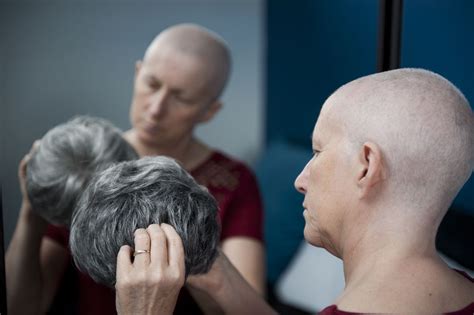Understanding the Journey
Breast cancer is the most common cancer among women worldwide, with over 2.3 million new cases diagnosed each year. Treatment often involves surgery, chemotherapy, and radiation therapy, which can lead to hair loss. Losing one’s hair can be a traumatic experience, affecting self-image, confidence, and overall well-being.

Role of Wigs in Cancer Care
Wigs play a crucial role in helping breast cancer patients cope with hair loss. They provide:
- Physical comfort: Wigs protect the scalp from sun exposure, wind, and cold, reducing discomfort and skin irritation.
- Emotional support: Wigs can restore a sense of normalcy, boost confidence, and improve mood.
- Improved self-esteem: Wearing a wig can empower patients to feel good about their appearance, regardless of their hair loss.
Types of Wigs for Breast Cancer Patients
There are numerous types of wigs available, each with its own advantages and disadvantages.
| Type | Material | Pros | Cons |
|---|---|---|---|
| Synthetic | Polyester, nylon | Affordable, durable, easy to style | Less breathable, can feel less natural |
| Human hair | Donated or processed human hair | Natural appearance, breathable, can be styled | More expensive, requires more maintenance |
| Heat-resistant synthetic | Polyester or nylon treated to withstand heat | Can be heat-styled, durable | Less breathable, may not look as natural |
| Custom-made | Made to fit the patient’s specific head shape and hair texture | Perfect fit, most natural appearance | Most expensive, longest production time |
Choosing the Right Wig
Selecting the right wig requires careful consideration. Here’s a step-by-step approach:
- Determine your skin tone and hair color: Match the wig to your natural skin tone and hair color, or experiment with different shades to find what suits you best.
- Consider your lifestyle: Choose a wig that fits your lifestyle and maintenance routine. If you lead an active lifestyle, choose a wig that is durable and easy to care for.
- Get a professional consultation: Consult with a wig specialist who can provide expert guidance and help you find the perfect wig for your needs.
Wearing and Maintaining Your Wig
Wearing Your Wig:
- Secure the wig: Use wig clips or wig tape to secure the wig to your head comfortably and securely.
- Adjust the wig: Make sure the wig fits snugly but not too tightly. The wig should not slip around or cause discomfort.
- Style the wig: Use a wig brush and styling products to style your wig as desired.
Maintaining Your Wig:
- Wash the wig: Wash the wig according to the manufacturer’s instructions. Use a mild shampoo and conditioner designed specifically for wigs.
- Dry the wig: Air dry the wig or use a blow dryer on a low heat setting.
- Store the wig: Store the wig in a wig stand or on a mannequin head to maintain its shape.
Resources for Breast Cancer Patients and Caregivers
- American Cancer Society: https://www.cancer.org
- National Cancer Institute: https://www.cancer.gov
- BreastCancer.org: https://www.breastcancer.org
Conclusion
Wearing a wig can be a transformative experience for breast cancer patients, providing comfort, support, and empowerment. By understanding the different types of wigs available, choosing the right wig for your needs, and properly wearing and maintaining it, you can enhance your well-being and embrace your beauty during your cancer journey.
